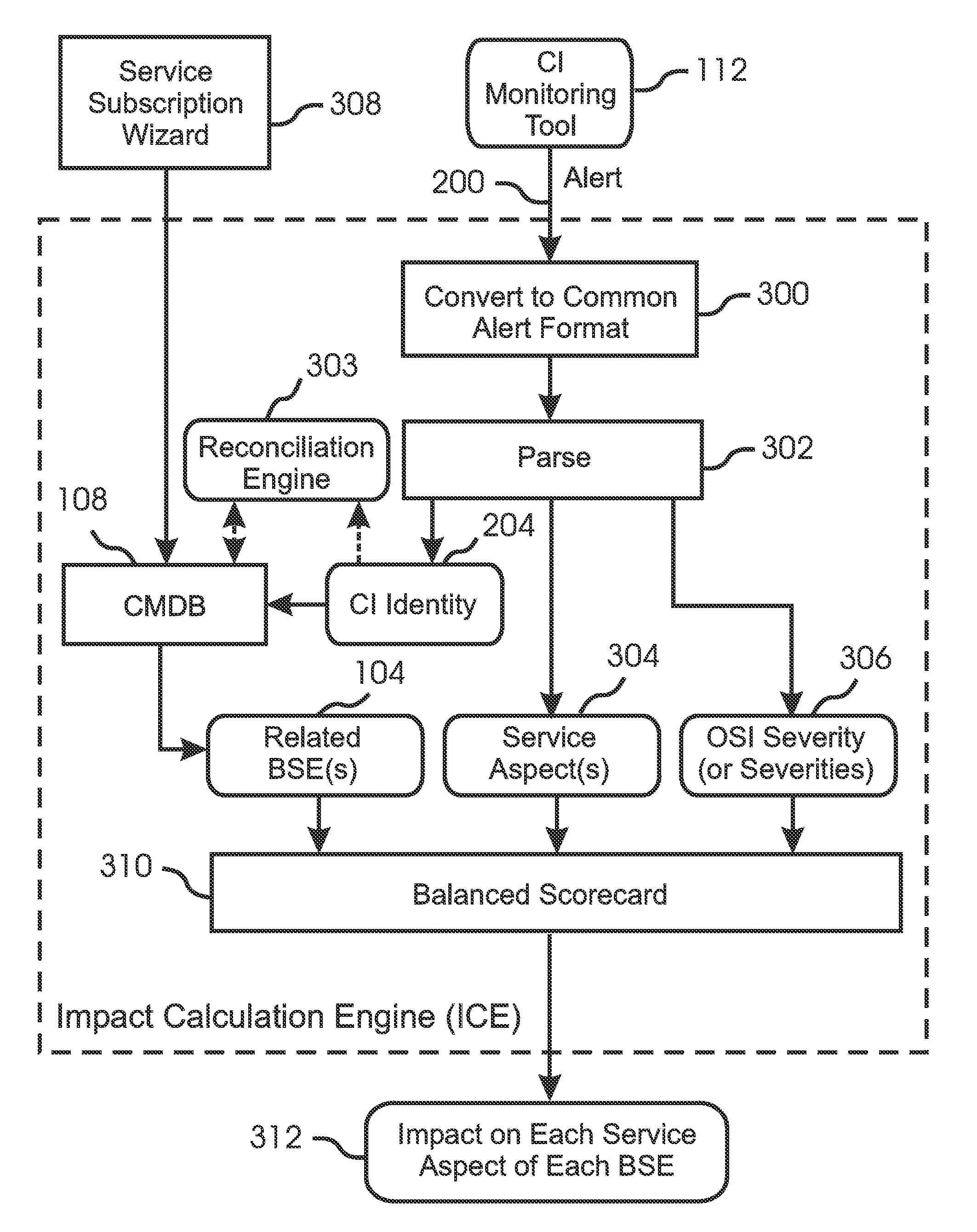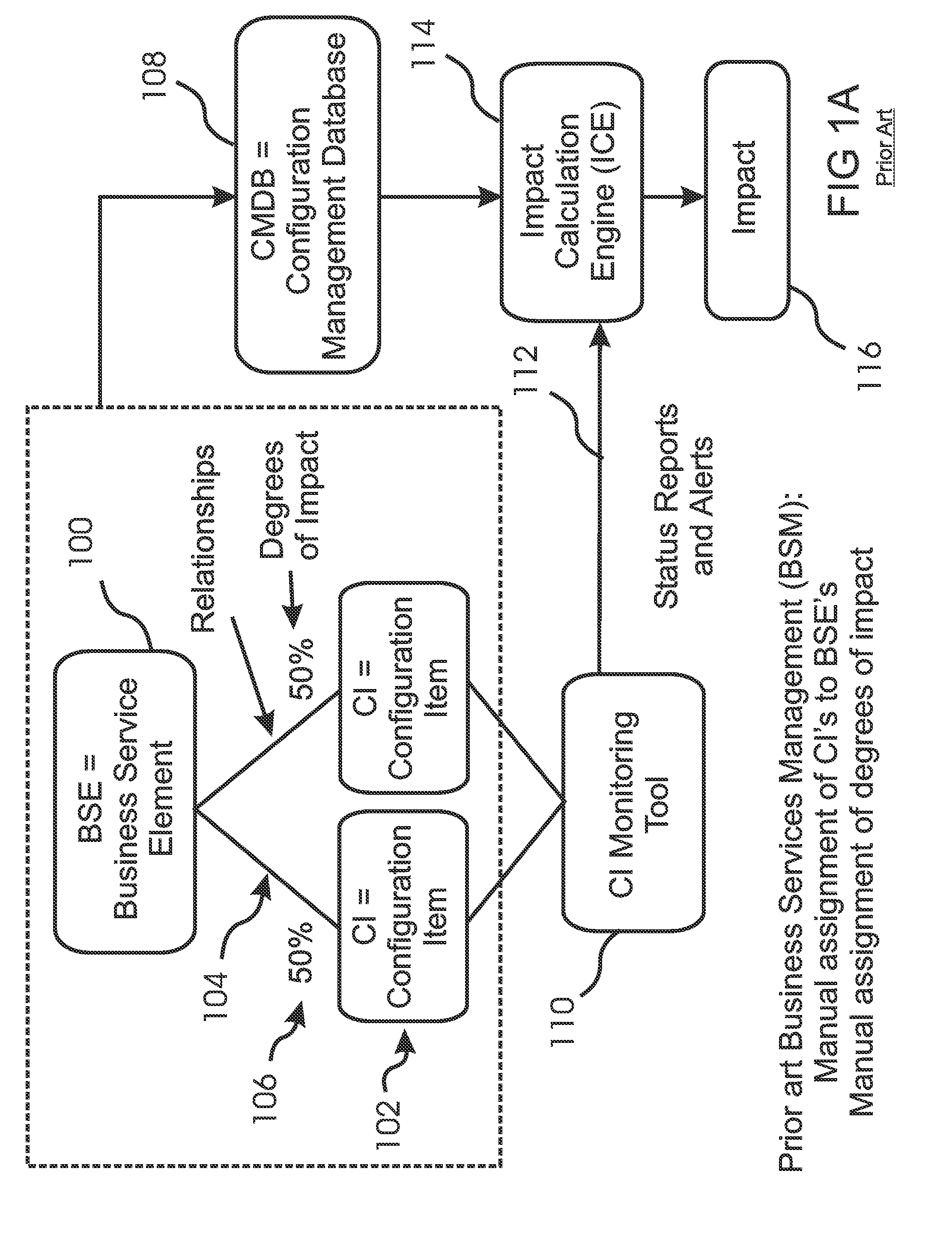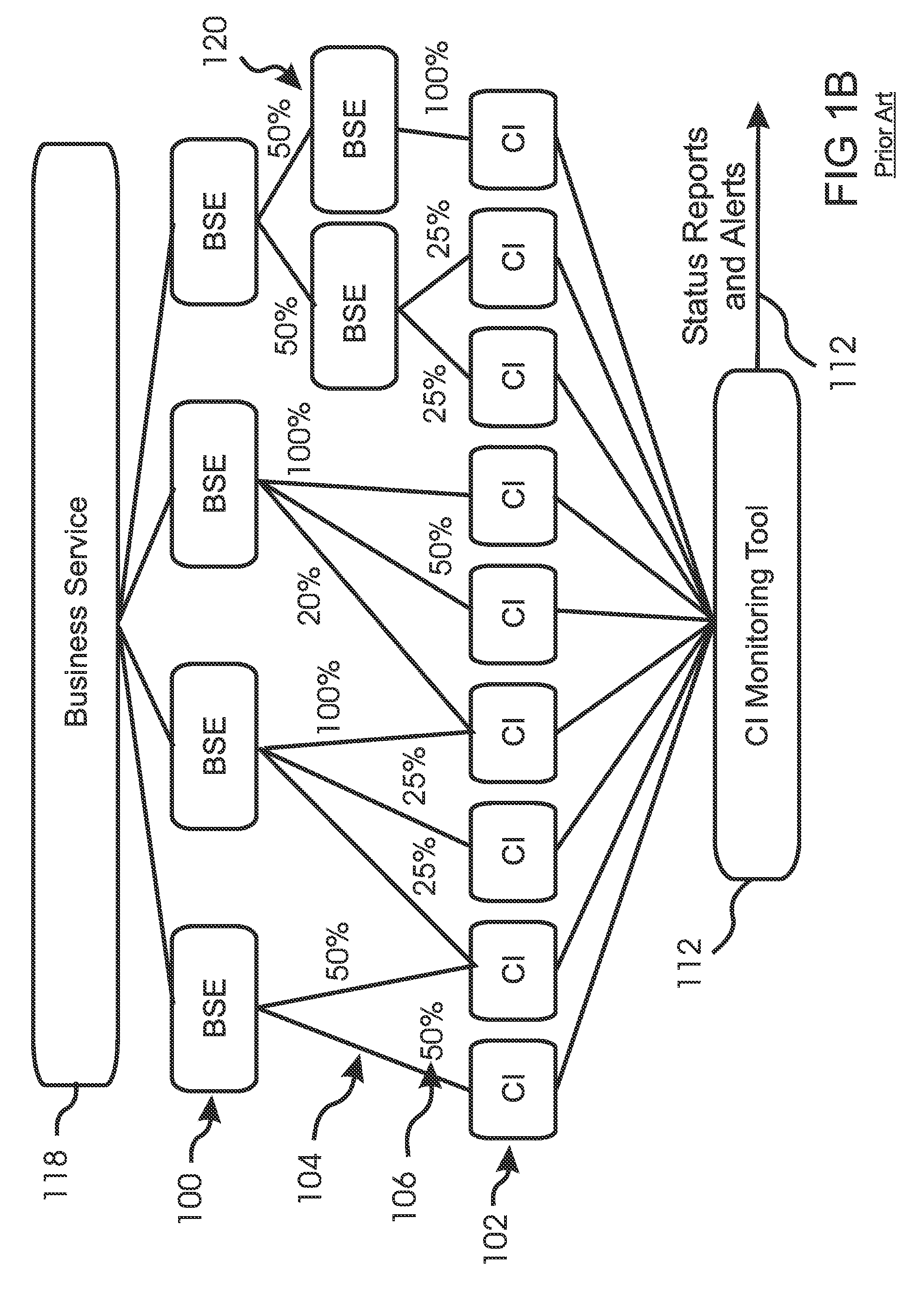Balanced Scorecard Method for Determining an Impact on a Business Service Caused by Degraded Operation of an IT System Component
a business service and scorecard technology, applied in the field of business service management systems, can solve problems such as inability to deliver its products and/or services, system failures, and large systems that enable these kinds of complex business services, and it is difficult to relate ci degradation and failures to actual impacts on business services
- Summary
- Abstract
- Description
- Claims
- Application Information
AI Technical Summary
Benefits of technology
Problems solved by technology
Method used
Image
Examples
Embodiment Construction
[0028]With reference to FIG. 1A, a business service, or a business service element (BSE) 100 within a business service, is supported by an IT system composed of a plurality of configuration items (CI's) 102 such as servers, routers, printers, databases, user nodes, and such like. In a typical business services management (BSM) system of the prior art, relationships 104 of CI's to BSE's are manually assigned, and degrees of impact 106, usually expressed as percentages, are manually assigned to the relationships 104. For example, if two servers 102 support a specific BSE 100, each of the servers 102 might be assigned a degree of impact 104 on that BSE 100 of 50%. An enumeration of the CI's 102 in the IT system together with the CI-to-BSE relationships 104 and associated degrees of impact 106 are typically stored by a prior art BSM in a Configuration Management Database, or “CMDB”108.
[0029]IT systems that support complex business services usually include software and / or hardware tools ...
PUM
 Login to View More
Login to View More Abstract
Description
Claims
Application Information
 Login to View More
Login to View More - R&D
- Intellectual Property
- Life Sciences
- Materials
- Tech Scout
- Unparalleled Data Quality
- Higher Quality Content
- 60% Fewer Hallucinations
Browse by: Latest US Patents, China's latest patents, Technical Efficacy Thesaurus, Application Domain, Technology Topic, Popular Technical Reports.
© 2025 PatSnap. All rights reserved.Legal|Privacy policy|Modern Slavery Act Transparency Statement|Sitemap|About US| Contact US: help@patsnap.com



